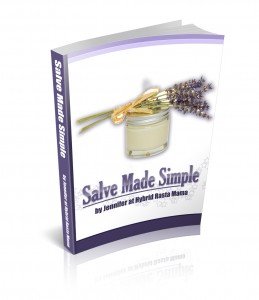Guest Post: What If I Can’t Afford to do the GAPS Diet?
While on vacation I’ve asked some of my fellow bloggers to fill in for me and today I’m excited to share a guest post from my friend Starlene Stewart who blogs at GAPS Diet Journey where she shares GAPS legal recipes and her journey to health. Starlene has had experience with doing GAPS on a budget so today she is going to share some tips and thoughts with us.
Maybe You Can Afford to do GAPS
So you’ve heard about the GAPS Diet and you’re thinking it might help you and your family. But you’ve also gotten the impression that you must eat only grass fed meats, organic produce and raw fermented dairy. Compounding the problem: you’re on a tight budget not by choice but because you’re living from paycheck to paycheck. You already buy almost all your food from the regular grocery store on sale, and you cut out the fancy coffee drinks long ago so there’s not much wiggle room. Before you can get started you examine your food budget, and it just doesn’t seem possible, so you don’t make plans to pursue GAPS.
But you do have a set amount of money to spend on food, right? What I’d like to encourage you to do is to take a look at the full GAPS list of foods and notice which foods are allowed and which are to be avoided. As you can see on the foods to avoid list, there are many processed foods. Now granted if you are on a tight budget you are already avoiding many processed foods, but GAPS is going to ask you to take it a step further.
How much breakfast cereal do you and your family consume? How much pasta? How much bread? Canned products? These are processed foods which can be pricey and when you remove them from your diet you will likely find that you have more money to shift toward buying meats and vegetables, the heart of the GAPS Diet.
Simplify the Diet
GAPS can be as easy as having a meat, vegetable, a fermented food and a cup of broth at each meal. I have read many accounts of people who started to feel better when the only thing they removed from their diet was gluten. Others felt better when also eliminating soy, sugar, and sometimes dairy products. GAPS asks you to remove grains, gluten, sugar, soy, MSG, food coloring, preservatives, chemicals and additives, just to mention a few and by avoiding foods which contain these products you may find that you start feeling better. If all you can afford is store bought food, I believe healing can occur - it has for me. My feet had been painful to walk on for years, and my back would stiffen painfully after I had been in bed for a few hours. Within 2 weeks of starting full GAPS, both stopped hurting and I was convinced that GAPS would be an important tool in my healing journey.
Why Are We So Hungry at First?
When you first start GAPS, it can be alarming how hungry you might feel. You may think this will go on forever, but rest assured, appetites will calm down. I believe this hunger phase happens for a couple of reasons. Most of us are accustomed to eating large amounts of grain products, which tend to “fill us up”. I believe this causes the stomach to stretch larger than it should be and become accustomed to this bulky food. When you remove grains from your diet, your stomach expects to be filled and meats and vegetables are not as bulky. It takes a few weeks for the stomach to shrink back to a normal size. Another thing I believe happens is as the gut begins to heal it is able to absorb more nutrients, the toxic load from processed foods is removed and the body can begin its work of healing, and begins to demand more nutrients. So have faith and know that you are where you should be in the process.
GAPS Economical?
GAPS can actually be economical. One of the main foods we should be eating are homemade soups. These are made from the parts of animals that are typically more affordable. Chicken necks are usually cheap and make a great pot of chicken stock. You can often find “clean” sources of these products for reasonable prices - I have heard stories of farmers giving away the “waste” products free and have personally been able to do so myself on one occasion. Maybe in the past you stripped the meat from the Thanksgiving turkey or a baked chicken and toss the carcass. No longer. Now you’re going to get a delicious pot of nutrient dense stock with food you once considered waste. Beef feet can be used to make a super gelatinous stock which is a great start to a nutritious pot of soup. Check out this video from Amanda at Traditional Foods on making 12 days of stock from one batch of beef feet.
Save Money by Removing Costly Toxic Products From the Home
When following the GAPS “Protocol” Dr. Natasha Campbell-McBride asks us to remove most personal products as well as common household cleaning products as these items add to the toxic load that our body must process. Simple household cleaners like baking soda and vinegar are cheaper than commercial products and reduce the toxic load, and this may help you find some extra dollars in your budget.
Choose Your Vegetables Wisely
As you decide which vegetables to purchase from your regular grocery store, look to the Dirty Dozen list which tells which vegetables are most likely to be grown using pesticides. Avoid the “dirty” vegetables and concentrate on the “clean” vegetables. If you buy your vegetables when they are on sale, you are shopping by what is in season. If you have a Costco membership they usually have organic fresh carrots, and organic peas and green beans in the freezer section. Perhaps you are in the position to have your own small garden. I used Duane Newcomb’s The Backyard Vegetable Factory to grow a wildly successful “postage stamp” vegetable garden in my small front yard while renting a duplex apartment years ago.
Seeking Out Better Quality Foods
You can ease into full GAPS slowly and you will surely begin to feel better, and as you do, begin to look for resources in your area. Eat Wild includes a listing by state for grass fed meat, eggs and dairy. Check with your local municipality, you may be able to have a few chickens to provide you with fresh eggs. Some areas even allow you to have dairy goats, and you can have your own raw milk. Also check in your area for a CSA which may allow you to buy your vegetables at a much better price. Local Harvest is a good place to look for local CSAs. Baden Lashkov’s GAPS Guide is a great resource in taking baby steps toward GAPS.
You Can Do GAPS on a Tight Budget
I have been unable to afford a totally “clean” diet while on GAPS but I have experienced great improvement, most significantly in the first six months. You may also find inspiration in my Blog Talk Radio interview with Kerri, mother of seven and she is seeing improvements in spite of the fact that they simply cannot afford to buy grass fed and organic for their large family.
Bottom line - if you feel that GAPS can help you and your family, just get started. Even if you can only manage store bought food at this point in time, I believe you can begin the journey to better health.
Thank you Patty for having me at your blog today, it has been a pleasure to share with your readers.
 Starlene is the author of GAPS Diet Journey, where she chronicles her journey to health on the GAPS Diet and explores other healing modalities compatible with GAPS. She also has a Blog Talk Radio show where she shares the testimonials of adults and children who are healing on the GAPS Diet. Starlene is married with two adults sons who were unschooled - one has recently left the nest. The Stewart family lives in rural Arizona on 3.5 acres where over the years they have raised turkeys, pigs, steer, lambs, chickens, ducks, dairy goats and guinea fowl, although currently they are down to one duck, a few chickens, several dogs and two cats. Starlene is a member of the Nourished Living Network and excited to share her knowledge with fellow bloggers and readers. You can keep up with Starlene through her blog, and connect with her on Pinterest, Facebook and Twitter.
Starlene is the author of GAPS Diet Journey, where she chronicles her journey to health on the GAPS Diet and explores other healing modalities compatible with GAPS. She also has a Blog Talk Radio show where she shares the testimonials of adults and children who are healing on the GAPS Diet. Starlene is married with two adults sons who were unschooled - one has recently left the nest. The Stewart family lives in rural Arizona on 3.5 acres where over the years they have raised turkeys, pigs, steer, lambs, chickens, ducks, dairy goats and guinea fowl, although currently they are down to one duck, a few chickens, several dogs and two cats. Starlene is a member of the Nourished Living Network and excited to share her knowledge with fellow bloggers and readers. You can keep up with Starlene through her blog, and connect with her on Pinterest, Facebook and Twitter.
Many of my blog posts contain affiliate links. Purchasing through an affiliate link allows me to keep blogging and sharing what I learn with you. It is a bit like leaving a tip for service and is very much appreciated.
Thank You! -PattyLA



5 Comments
Trackbacks/Pingbacks
- Don’t Stress Whole Foods, Link Roundup : - [...] What If I Can’t Afford to do the GAPS Diet? [...]
- GAPS Intro Once Again | Loving Our Guts - [...] journey shared that GAPS got rid of her chronic back pain that woke her up after not enough sleep …

















In our situation we can afford healthier meat by having my husband be the butcher. He was raised on a farm so he knows how to slaughter and butcher. He also taught me how to make lard. When we are tight on money we buy farm raised meat and Then conventional vegetables but I always evaluate the dirty dozen list. I give my kids fruit but would never buy conventional strawberries. If anything I would opt for a banana instead if they just are not available. I think that if ppl could learn to slaughter and/or butcher, farm raised meats are actually much cheaper. We spend $200+ on lamb or pork but it lasts about a month. Nito mostly likes ground meat and I have a local farmer who sells it already packaged and really cheap, plus she sympathized with me aboit the kids and actually brings it to me, along with free organic produce. I think if you get your foot in the door and make the right connections you will find people who will make deals. There have been times our farmer let us pay him back a week latee. My husband actually likes buying meat this way. Plus if on the rare occasion nothing is available I just buy chicken. I normally get organic chicken but if we are really struggling I get conventional chicken. It is all about doing your best!
Hi Charlotte, you are lucky that your husband knows how to butcher! We did learn but it is not easy for us to do. Unfortunately it is expensive for us to grow our own mea since we live in the desert and have to haul our own water that means no lush grass pasture so we have to bring in every bit of food. Great suggestions, thank you for sharing how you make GAPS work on a budget. I agree, we just need to do the best we can. If we are fretting and stressing out because we aren’t doing things perfectly then that isn’t any good either.
Hi,
I am at the stage now of trying to rough estimate a monthly dollar figure on the GAPS diet so I can get some idea of whether I can afford it.
May I ask what might seem like an odd question? For a family of 3 do you have any idea how far 70 lbs of meat will probably last on the GAPS diet? I know a grass fed beef farmer who sells a quarter cow (60-80 lbs) for about $460 and just trying to work that into the total calculation.
Thanks
James
I really can’t answer that questions. Some people eat very little meat on GAPS while others eat a lot. The other meats you will be eating will also effect how long that will last you. Can you have eggs? Dairy? Those also effect how long it will last. How do you do at eating organ meats? Those are a cheaper option. Can you tolerate a lot of fat? Fat stretches your meat budget a lot since it fills you up quickly and is so nutritious but not everyone can tolerate much fat at first.
Whatever you do ask for all the organs, bones and fat that come with your 1/4 cow and anything else that they might want to give you. Sometimes the people getting the rest of the cow don’t want their organs, bones and fat and so you can get everything. Those bones and organs are very valuable in your healing journey.
I’m trying the gaps diet soon.. I would like any advice or tips through email. Thanks